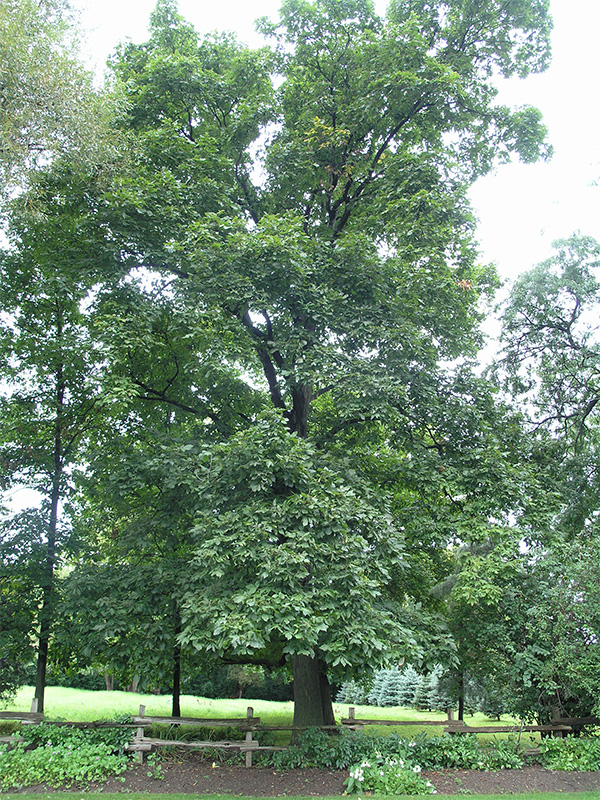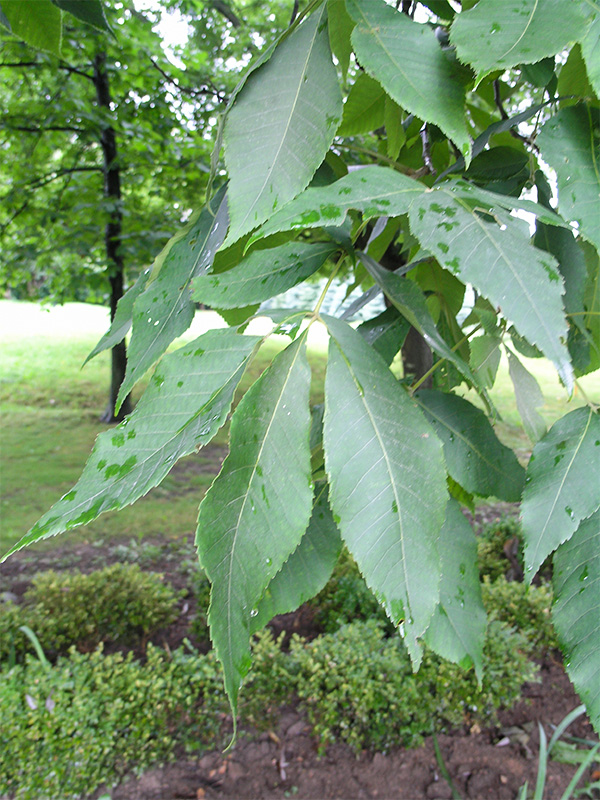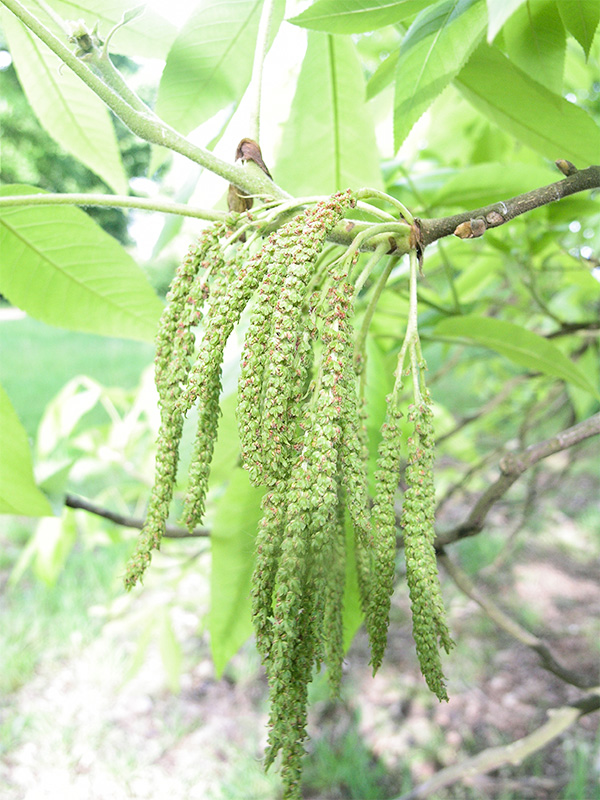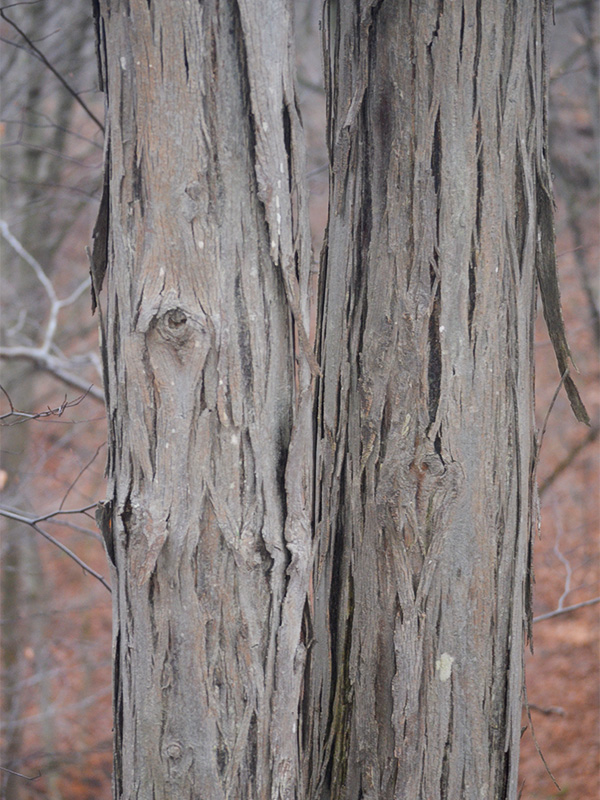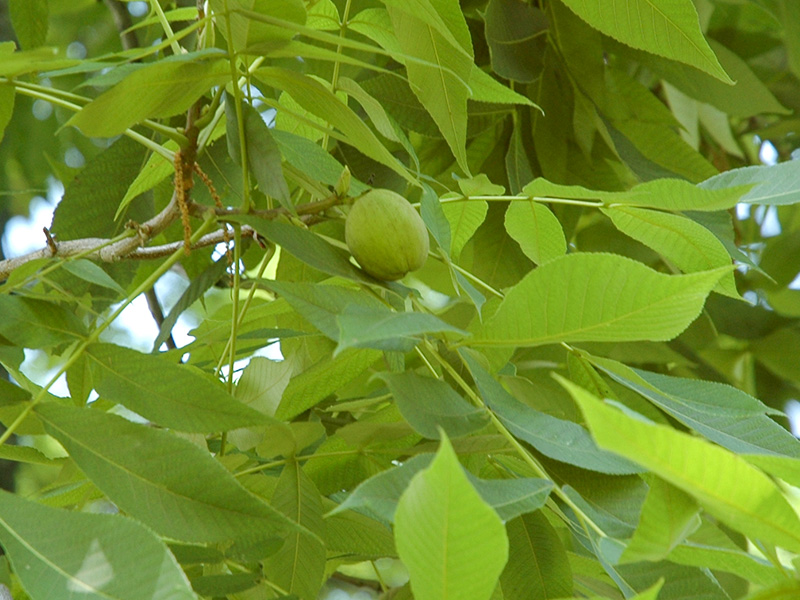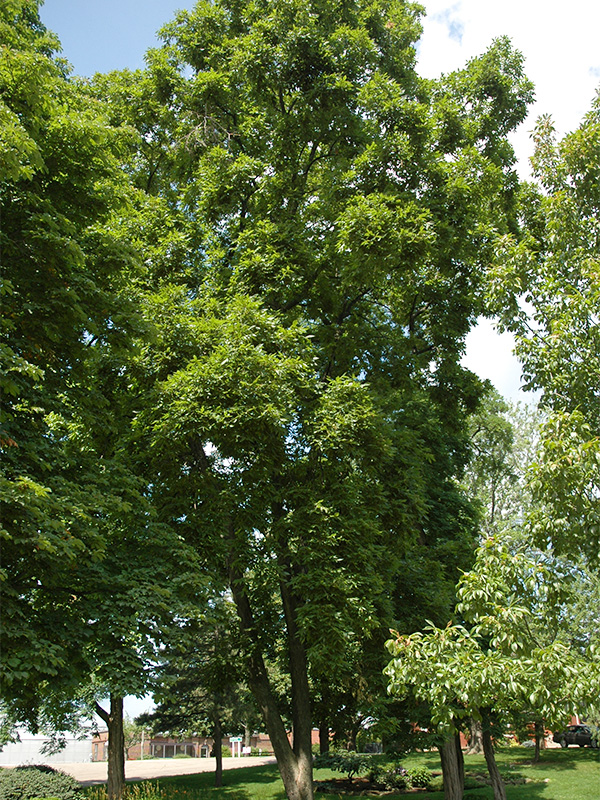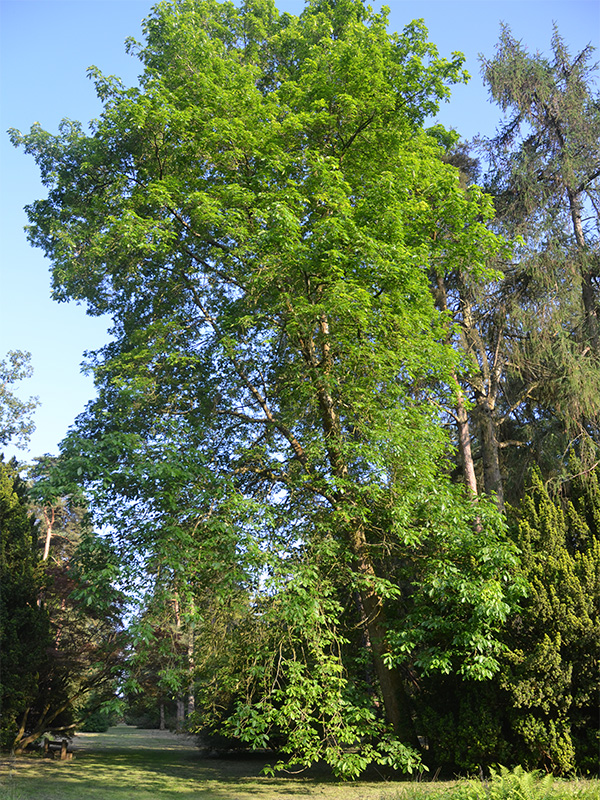| Shape | Large, tall and irregular. |
| Landscape | Ornamental use. |
| Propagation | Nuts, soaked in water at room temperature for 2 - 4 days with water changes 1 - 2 times per day. Stratify in a moist medium at 4°C for 30 - 150 days. Plant in containers, cover with a screen and place outside over winter. Germination in the spring. Produces a pronounced tap root with minimal shoot growth in the first year. Cultivars are budded or grafted on seedling understocks. |
| Cultivation | Full sun and partial-shade. Moist, well-drained, rich, humusy loam soils. |
| Pests | Hickory bark bettle, pecan weevil and twig girdler cam be a problem. Anthracnose and leaf spot are occasional diseases. |
| Notable Specimens | The Vineland Research and Innovation Centre, Vineland, Ontario, Canada. Westonbirt, The National Arboretum, Tetbury, Gloucestershire, England.
Parkhill Conservation Area, Parkhill, Ontario, Canada. |
| Habitat | Climax forests, dry upland wooded slopes, hills, valleys and lowland woods. |
| Bark/Stem Description | Trunks mature to 60 - 90 cm in diameter. Young trees bark exfoliates as it ages. The exfoliation is more recurved and pronounced.
|
| Flower/Leaf Bud Description | Imbricate, terminal 1-2.5 cm long, broadly ovate, blunt pointed with 2-4 ridges. |
| Leaf Description | Odd-pinnate, compound leaves, each having 5 finely-toothed, broadly lance-shaped and pointed leaflets. 7 - 17 cm long.
|
| Flower Description | Non-sowy, monoecious flowers appear in April-May. Male flowers are in pendulous catkins that are 7 - 12 cm long while the female flowers are short spikes. |
| Fruit Description | Female flowers give way to an edible, oval-rounded nut. Enclosed in a hick husk that splits open in four sections when it ripens in autumn. |
| Colour Description | The leaves are a medium yellowish-green and turn a yellowish-golden brown in autumn. The flowers are greenish-yellow. The bark is grey in colour. |
| Texture Description | The bark on young trees are smooth. |
